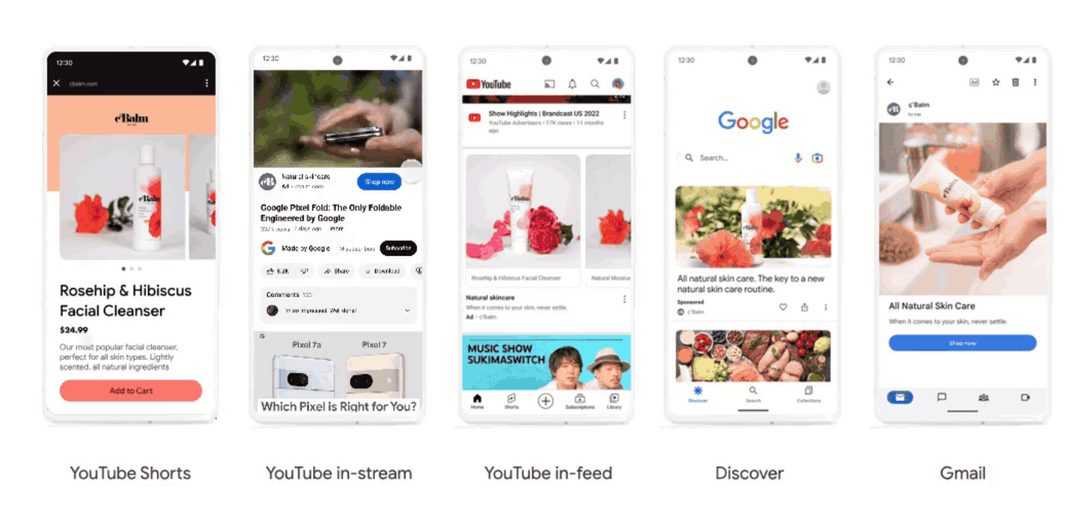 Go back to Blog
Go back to Blog
Olivier Kargbo
Published on 15 December 2023

Social media marketers have a new tool to reach and impact over 3 billion monthly users on YouTube: Demand Gen.
A few weeks ago, Google unveiled its latest AI-powered ad solution dedicated to YouTube “social like” feeds on YouTube, Shorts, Discover and Gmail.
A strategic move toward a more visual and entertaining format along with Search Ads, that is clearly competing with other social media advertising networks.
Demand Gen – evolution of former static Discovery Ads – integrates videos, images and texts to target Mid and Bottom of Funnel audiences.
According to alpha testers, results sound promising and Demand Gen is opening new opportunities with new ad inventories among social players.
BUT… Like any emerging ad format full of promises, marketers should approach Demand Gen with methodology to achieve optimal cost and efficiency.
Let’s delve further to examine how Demand Gen can enhance the performance of your YouTube campaigns.
But first, let’s address a common misconception.
Performance Max (PMax) and Demand Gen are both Google Ads automated products, but they serve different purposes and have distinct features.
Performance Max
> Not dedicated to video and is designed to complement keyword-based Search campaigns, serving across all of Google’s inventory, including Search, Display, YouTube, Gmail, Discover, and Maps.
> In this product, video receives limited exposure.
Demand Gen
> More visually focused and primarily serves ads across YouTube, Discover, and Gmail.
> Integrates both image and video ads within a single campaign, making it a more suitable choice for video-focused advertising strategies.
Demand Gen ads are meant to run on

While devices can be configured at the campaign level, it’s essential to note that the predominant supported device is mobile as in-feed, Shorts, or Discover are mobile-first/friendly formats.
From our observations at this point, Demand Gen distribution predominantly occurs in in-feed ads, on mobile devices. And this is nos surprise as Demand Gen is the new Discovery.
The in-feed format on YouTube refers to the content that appears in a user’s feed when they open the YouTube app or website. These ads can be static or video appearing in places such as search results, the home feed, or the “watch next” feed.
They consist of a thumbnail image from the video with some text. When a viewer engages with the thumbnail, they are directed to the YouTube watch page for the ad.
In most cases, the advantage lies in the fact that video completion is entirely unrelated to the conversion rate. In other words, viewers don’t have to watch the entire video to take action.
In this highly visual and entertainment-focused environment among creators and non branded content, competition for attention is huge.
Creativity and ability to hook within the first seconds is key to success.
Marketers should conduct experiments primarily with images and video hooks, given the typically low completion rates for videos in in-feed ads. Again, only the first seconds are key.
Plus, treat your video thumbnail like a Display ad and engage in audience experiments for optimization.
Demand Gen is coming with a native A/B testing solution optimized with machine learning.
This is a groundbreaking feature on YouTube.
Size the opportunity: You can upload up to five videos per campaign, in addition to multiple images -Ranging from carousel, landscape, vertical, squared… specs. – headlines, descriptions, logos, and calls to action.
Play with your existing content (TV ad, UGC, educational…) and vary length, rhythm, intro…
Then Google ML controls media spend with its own algorithm.
From a media perspective, ML has to deal with multiple audiences (middle and bottom of the funnel), devices (from small to big TV screens), formats (9:16, 16:9…), CTAs…
Combinations are endless! That’s where ML is coming to the rescue.
Demand Gen data offers insights and optimization options within a defined scope -note you can’t optimize on Creatives:
Don’t be too optimistic and approach your campaign strategically.
YouTube’s AI necessitates some timeframe for optimal ad optimization, often surpassing 50 conversions. This entails allocating a substantial daily budget for each ad group to achieve meaningful results.
On top of that, Google ML’s budget allocation doesn’t consistently prioritize the most effective creative, audience, or device combinations – Even for a selected KPI bidding – leading to inefficient use of ad spend.
The introduction of this new advertising solution is a real opportunity to test and reach new inventory.
Nevertheless, our suggestion is to avoid exclusive reliance on Google’s ML for campaigns optimization. Doing so mitigates the risk of encountering issues such as wasted ad budget, elevated CPAs, and creative fatigue.
Demand Gen is 100% complementary to YouTube ads campaigns.
1/ Begin by concentrating on video ads creatives, where you can continuously test, optimize with an independent ML and iterate creatives.
2/ Incorporate Demand Gen as an additional touchpoint to engage middle and bottom-of-funnel audiences with multiple formats, integrating all previous creative insights.
Using VideoRunRun and its data-driven Creative Loop allows to get all the learnings on creatives to deal with
This way, you get the insights to continuously measure and improve your YouTube ads and Demand Gen campaigns with control over Creative and Media optimization.
Demand Gen is more than ever the new Google ad format rivaling other social media platforms and unlocking access to a vast audience with similar ad formats.
The crucial element lies in the control of Audience/Creative combinations and distribution, requiring iterative testing and refinement of Creatives, facilitated by Data-Driven Insights.
To unlock the full potential of your YouTube strategy – and reach Exit Velocity? – consider exploring VideoRunRun’s solution.
Already have a video? Optimize your video impact with VideoRunRun’s YouTube Creative/Media audit. Gain valuable Creative insights to enhance ad performance and eliminate wasted spend. Email us now.